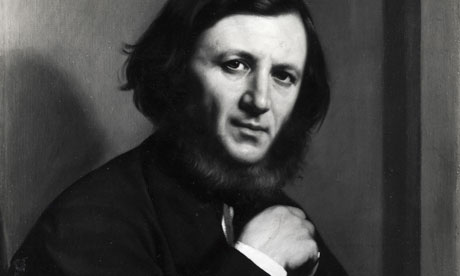Two perspectives on either side of a nocturnal liaison make up a strikingly contrasting diptych

Dramatic genius ... Robert Browning, as painted by M Guardigliani in 1858. Illustration: Corbis
This week's choice is an intriguing diptych by Robert Browning. "Meeting at Night" and "Parting at Morning" were paired on their first publication in Dramatic Romances and Lyrics (1845), under the title "Night and Morning; I. Night; II. Morning." The present titles come from the Poems of 1849.
In length, metre and mood, the "twins" are distinctly un-identical. One is a nocturne, the other, a kind of aubade, or alba. They are part of the same narrative, but as different as night and day.
The first poem itself has two stanzas, but, despite their separate numbering, the effect is unitary. It begins in boldly impressionistic, even imagistic, style, as the salient features of the scene are listed in lines of lightly-flowing tetrameter. The syntax is casual, as if lines had been lifted from a notebook. Browning paints in contrasted colours and shapes, and deploys some brilliant chiaroscuro. It's visually stunning, and the auditory effects, the plashing and rippling captured in sound, are no less impressive.
More
In length, metre and mood, the "twins" are distinctly un-identical. One is a nocturne, the other, a kind of aubade, or alba. They are part of the same narrative, but as different as night and day.
The first poem itself has two stanzas, but, despite their separate numbering, the effect is unitary. It begins in boldly impressionistic, even imagistic, style, as the salient features of the scene are listed in lines of lightly-flowing tetrameter. The syntax is casual, as if lines had been lifted from a notebook. Browning paints in contrasted colours and shapes, and deploys some brilliant chiaroscuro. It's visually stunning, and the auditory effects, the plashing and rippling captured in sound, are no less impressive.
More
No comments:
Post a Comment